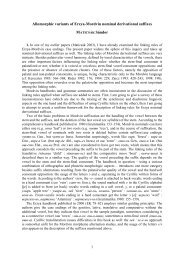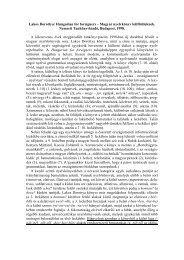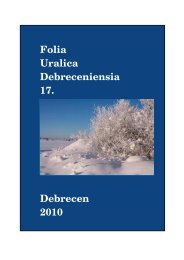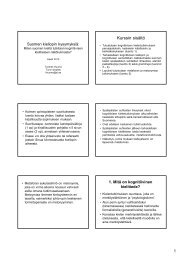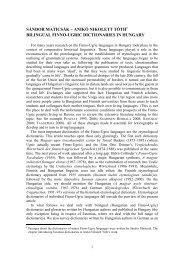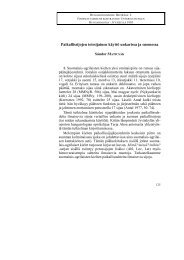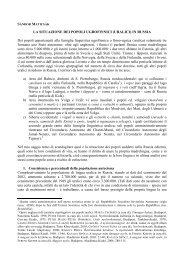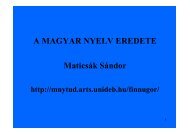folia uralica debreceniensia 19. - Finnugor Nyelvtudományi Tanszék
folia uralica debreceniensia 19. - Finnugor Nyelvtudományi Tanszék
folia uralica debreceniensia 19. - Finnugor Nyelvtudományi Tanszék
Create successful ePaper yourself
Turn your PDF publications into a flip-book with our unique Google optimized e-Paper software.
EGYEZTETÉSI TÍPUSOK<br />
Popov, Konstantin 1988: Константин Попов, Синтактичното съгласуване<br />
в български език. Народна просвета, София.<br />
Popov, Konstantin 1998: Главни части на изречението. In: Граматика на<br />
съвременния български книжовен език. Том 3. Синтаксис. Абагар,<br />
София.<br />
Pusztay János 1994: Könyv az észt nyelvről. Folia Estonica. Tomus III.<br />
Szombathely.<br />
Quirk, Randolph–Sidney Greenbaum 1972: A Grammar of Contemporary<br />
English. Longman, New York and London. 359–370.<br />
Quirk, Randolf et al. 1991: Randolf Quirk–Sidney Greenbaum–Geoffrey<br />
Leech–Jan Svartvik, A Comprehensive Grammar of the English Language.<br />
Longman, London and New York. 755–768.<br />
Rácz Endre 1991: Az egyeztetés a magyar nyelvben. Akadémiai Kiadó, Budapest.<br />
Sammallahti, Pekka 1972: Saamen kielen oppikirja. Helsinki.<br />
Sammallahti, Pekka 1993: Sámi–suoma–sámi sátnegirji. Saamelais–suomalais–saamelainen<br />
sanakirja. 4. painos. Girjegiisá Oy, Ohcejohka.<br />
Sammallahti, Pekka 2005: Láidehus sámegiela cealkkaoahpa dutkamii. Davvi<br />
Girji, Kárášjohka.<br />
White, Leila 2001: Suomen kielioppia ulkomaalaisille. Finn Lectura, Helsinki.<br />
Types of agreement in Hungarian, Finnish, Estonian, Lapp (Saami)<br />
and Bulgarian VI. (Numerus agreement II.)<br />
We can say that in the languages under examination there is a variation in<br />
the use of singular and plural forms. In most cases in Hungarian, the agreement<br />
of two or more conjoined singular subjects requires a singular verb.<br />
Two important facts should be taken into consideration: on the one hand, the<br />
subject is a concrete or abstract noun, and on the other, the subject is animate<br />
or inanimate. In Finnish and Estonian, two conjoined singular subjects take a<br />
plural verb<br />
In both languages, there are variations as well. In Saami, the situation is<br />
even more complicated because of the dual form, as usually after two persons<br />
or animals dual forms are used. In the case of several inanimate nouns<br />
the verb is in the plural. The singular is used only after material nouns.<br />
*<br />
179



